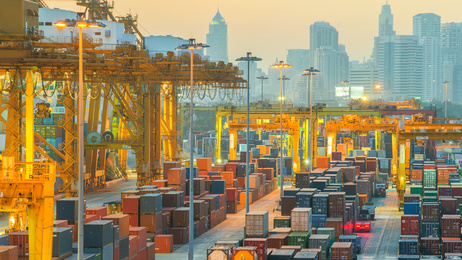Top risk management firm RMS conducted a catastrophic risk analysis of the world’s ports, ranking them according to greatest loss potential. Though the two riskiest ports are in Japan and China (Nagoya and Guangzhou), out of the top ten most hazardous ports, six are located in the United States and two are in Europe.
The top ten ranking (and estimated losses) are as follows. Please note, losses have been rounded to one decimal place).
1. Nagoya, Japan (2.3 billion)
2. Guangzhou, China (2.0 billion)
3. Plaquemines, LA, U.S. (1.5 billion)
4. Bremerhaven, Germany (1.0 billion)
5. New Orleans, LA, U.S. (1.0 billion)
6. Pascagoula, MS, U.S. (1.0 billion)
7. Beaumont, TX, U.S. (0.9 billion)
8. Baton Rouge, LA, U.S. (0.8 billion)
9. Houston, TX, U.S. (0.8 billion)
10. Le Havre, France (0.7 billion)
“Surprisingly, a port’s size and its catastrophe loss potential are not strongly correlated,” said Chris Folkman, director of Product Management at RMS. Indeed, Plaquemines in Louisiana, Pascagoula in Mississippi, and Bremerhaven in Germany, are relatively smaller ports. Their high level of risk is due to specific environmental hazards and cargo types.
“While China may be king for
The analysis arrived on the first anniversary of China’s 2015 Tianjin Port disaster, in which a large series of explosions led to 173 deaths and over $2 billion in losses.
RMS highlighted that though container shipping has significantly benefited the world economy, due to the necessary increases in vessel size, and port/storage capacity, these benefits came at the price of greater risk exposure. These larger ships, unable to use river ports, have shifted more traffic to seaside ports, which are more vulnerable to typhoons, storm surge, earthquakes, and hurricanes.
Folkman also added that “the value of global catastrophe-exposed cargo is huge and is expected to keep growing.” Regarding risk management best practices, he emphasized that there is a real and growing need for improved data and modeling, explaining that these will “enable more effective portfolio management and underwriting for this dynamic line of business.”


















